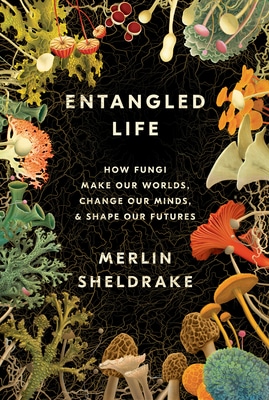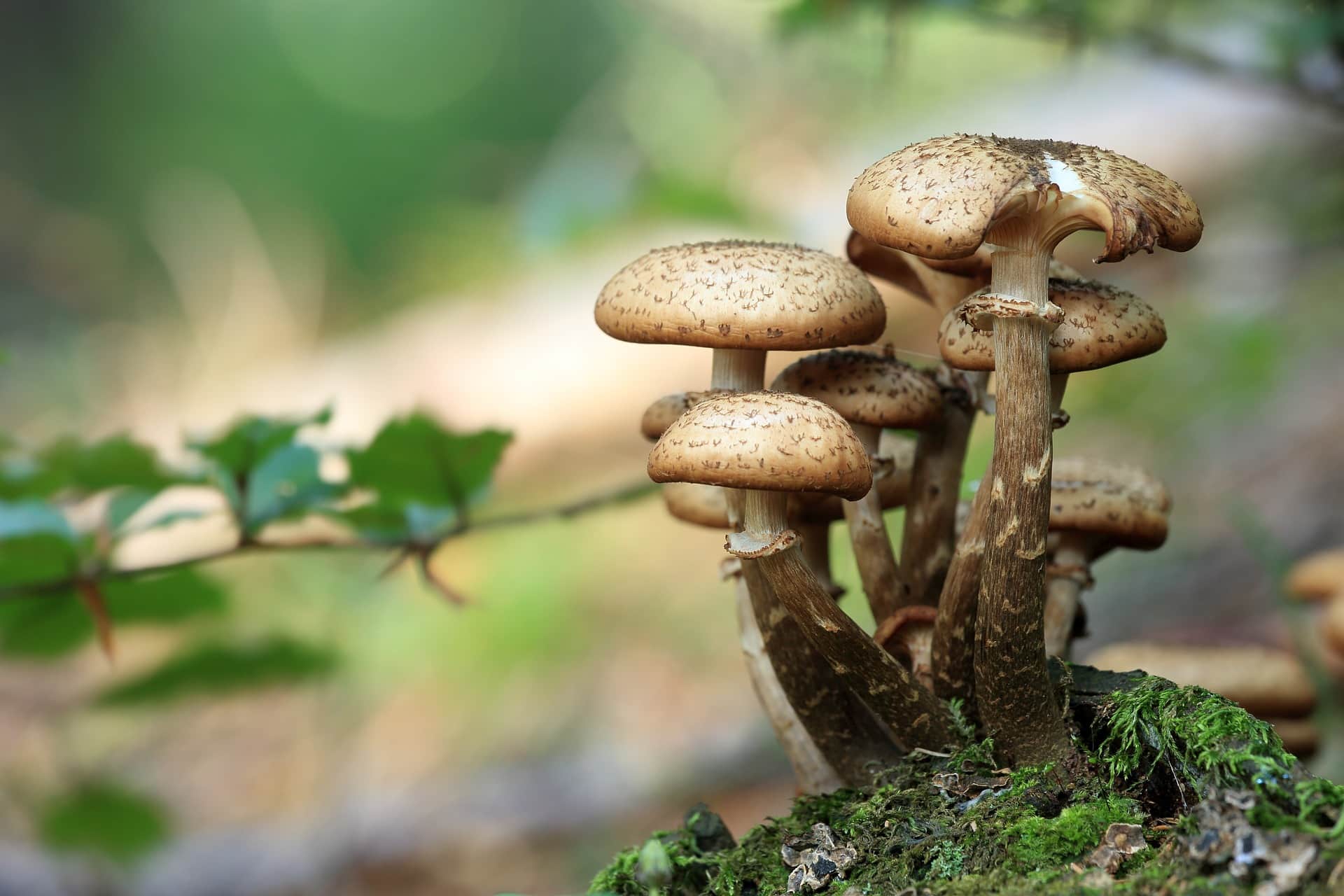 The Fungus Among Us
The Fungus Among Us
Author: Merlin Sheldrake
Can we just agree that fungi are amazing? They are beautiful and deadly, otherworldly and yet deeply enmeshed in the soil of our earth. They appear and disappear, seemingly on a whim. They can kill and they can cure, and so very little is known about them.
I’ve always liked mushrooms (what’s not to like about something gorgeous, unknown, and potentially deadly), so when I saw the absolutely gorgeous cover of Entangled Life: How Fungi Make Our Worlds, Change Our Minds & Shape Our Futures I had to have it. Finally, a book that talks about the fungi that lurk in the corners of our world, living, fruiting, communicating, and disappearing into the soil again: a thriving community with untold secrets.
Merlin Sheldrake starts Entangled Life like the most panoramic and adventurous of nature shows. It’s impossible not to get hooked. Sheldrake isn’t afraid to get scientific (in a user-friendly way) and we’re soon learning what make fungi tick as the author goes on adventures, doing everything from prowling through the soil of a forest floor on his hands and knees to following highly trained truffle dogs seeking a delicacy.
The book starts with the science. This is where the best of the content is. Sheldrake introduces mycelial networks (i.e. filaments that enable a mushroom to communicate and “think”) and the Wood Wide Web. Fungi are not as solitary as they seem. They are connected to the plants around them, so intricately woven that it’s hard to see where a fungus ends and another entity begins. Under the surface nature is teeming and, it appears, talking. How else could plants that cannot photosynthesize get the nutrients they need to survive? How else can nutrients flow to areas that need them? Scientists are still experimenting, still learning about this Wood Wide Web, and fungi appear to be the elusive glue that brings it all together. Sheldrake talks about experiments that suggest these web – and fungi – have a way of thinking that is just as alien as it is practical and ultimately intricate.

Image by Tomasz Proszek from Pixabay
From here, we learn about mushrooms (the fruiting body of a fungus) and start to move away from the science into the everyday. How do people use fungi? What can they do? How do they effect humanity and our history. From the delectable truffles, to an LSD trip for science, to fungi furniture (seriously), Sheldrake explores everything fungi and where these crafty little mycelia make their way into our everyday world.
The first part of the book with its dense science was actually my favorite portion. It’s hard, but done approachably, and the fungi themselves are fascinating subjects, still shrouded in mystery despite the initial probing. It’s enough to call the armchair explorer in all of us and make us passionate about our natural world. Everything fits together so well, communicates so well, comes together into such brilliance and intelligence. It’s hard not to love it.
But as Entangled Life goes on, it begins to get a bit dry. Part of the problem of a mystery is that once you’ve probed what is known, there is little else to say. In other words, Sheldrake gets very repetitive, especially for a short number of pages. The impact of fungi on humanity itself is less interesting because it is more anecdotal and, also, more known. We’ve all herd of magic mushrooms and those pricy truffles. It’s just not as cool as the World Wide Web and there is a lot less you can do with it. From mystery to everyday is a difficult transition, despite the author’s passion and good writing.
So, while not perfect, and not perfectly engaging the entire time, Entangled Life is still good, and a must for those who love the fungus among us. I’m hoping that this book will encourage more study into fungi, more revelations, and a growing interest in a relatively small yet powerful field of study.
– Frances Carden
Follow my reviews on Twitter at: https://twitter.com/xombie_mistress
Follow my reviews on Facebook at: https://www.facebook.com/FrancesReviews
- Book Vs Movie: The Shining - April 6, 2020
- Thankful For Great Cozy Mysteries - December 13, 2019
- Cozy Mysteries for a Perfect Fall - October 20, 2019


